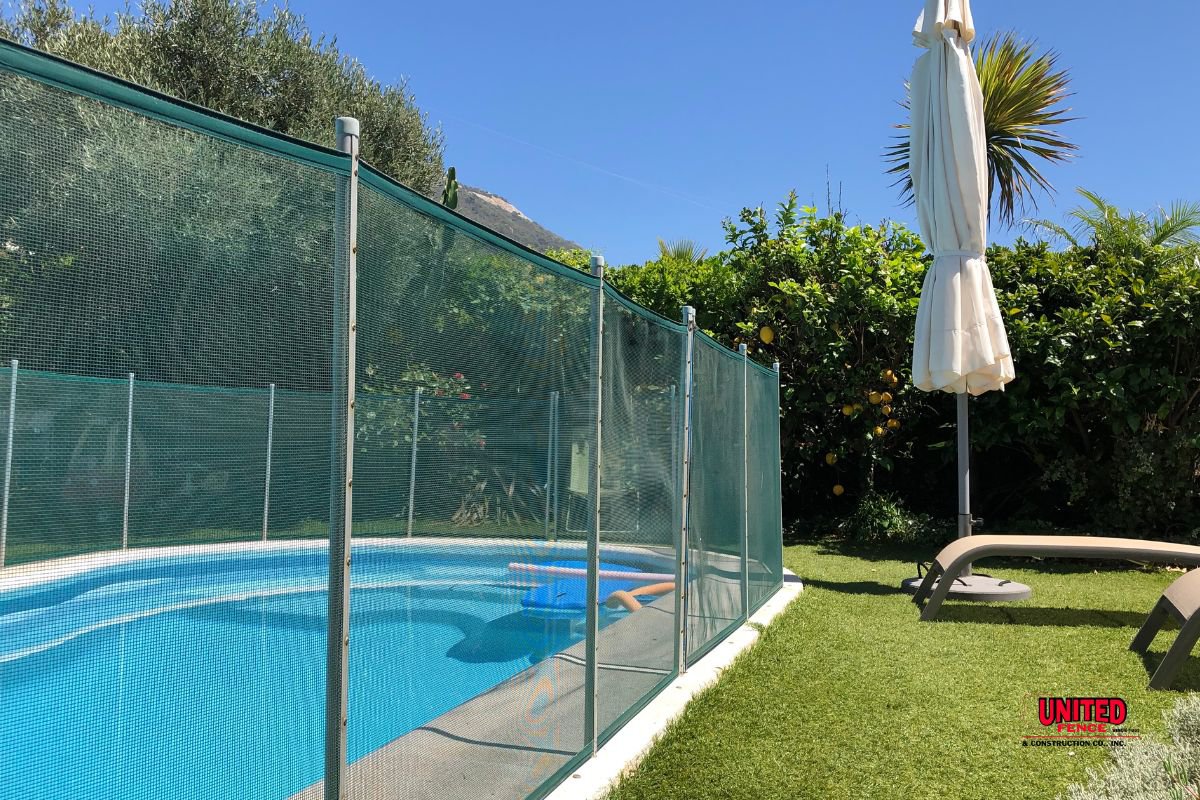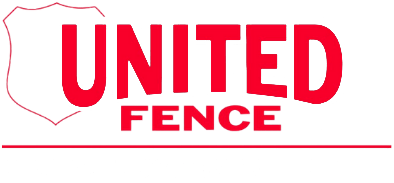Pool security fencing isn’t just a good idea—it’s required by law in most places. Whether you manage a facility or own a business with a pool, staying compliant with safety regulations is essential. To ensure you meet the requirements, you must follow specific rules, from height requirements to secure gates. Every detail matters when it comes to safety. Here’s what you need to know to keep your property safe and up to code.
Key Takeaways:
- Pool Fences & Regulations: Must be at least 4 feet tall (some areas require 5+ feet), gaps under 4 inches, self-closing/latching gates, and durable materials (metal, wood, glass, or mesh). Some cities require alarms.
- Child-Proof Pool Gates: Should be self-closing/latching, with high-positioned locks (keypads, combo locks, magnetic latches). Aluminum & steel gates are strongest.
- Types of Pool Fences: Permanent (aluminum, wood, glass) for durability; Removable (mesh, vinyl) for flexibility. Cost, strength, and maintenance vary.
- Affordable DIY Fences: Mesh, PVC, wood, metal posts with netting; no-drill options available.
- Installation & Maintenance: Follow local codes, use secure materials, install self-closing gates, inspect frequently for damage.
- Privacy & Aesthetic Fences: Wood or vinyl for privacy, glass for open views, shrubs & greenery for natural barriers.
- Renters & Temporary Solutions: Removable mesh fencing, freestanding barriers, weighted bases for flexibility. Always check local safety laws.

Key Safety Regulations for Pool Security Fencing
Pool security fencing plays a crucial role in preventing drowning and keeping people safe. While the U.S. Consumer Product Safety Commission (CPSC) sets national standards, it's important to note that local laws may have additional requirements. Therefore, always check your city’s codes before installing a fence to ensure full compliance.
Required Height and Material Standards
Your pool security fencing must be at least four feet tall, although some states may require a height of five feet or more. Additionally, gaps between the fence panels should be no larger than four inches to prevent small children from squeezing through. It's also essential that gates self-close and self-latch to minimize the risk of accidents.
The materials used for the fence should be strong and durable to withstand various conditions. Common options include metal, glass, wood, and mesh. Be mindful that chain-link fencing with large openings may not meet swimming pool safety standards unless it is modified to prevent climbing.
Key Features for Pool Fence Compliance
To ensure your pool fence meets safety standards, it must effectively prevent unauthorized access, hold up in different weather conditions, and comply with height regulations. The best designs include vertical bars, no footholds, and a locked gate. Additionally, some cities may require alarms that sound when the gate is opened, adding another layer of safety.
For additional details, visit the CDC’s pool safety page. If you’re choosing a fence, check out these Pool Safety Fencing Tips.
Child-Proof Pool Gates Improve Safety
A child-proof pool security fencing gate is one of the most effective ways to prevent accidents. If the gate doesn't close and latch automatically, children could access the pool without supervision. That's why self-closing and self-latching gates are so important—they ensure the gate stays shut, even if someone forgets to close it. Additionally, many areas require these features for compliance.
Locks provide an added layer of security by preventing children from opening the gate. Pool safety locks can use keypads, magnetic latches, or combination locks, but it's important to ensure they're positioned high enough so children cannot reach them. The most reliable locks also prevent children from reaching through gaps to open the latch.
When selecting the right pool security fencing, it's essential to choose sturdy materials. Aluminum and steel gates are the most durable and can withstand harsh weather conditions, making them a strong choice. Vinyl and mesh gates are lighter but still provide safety if they meet local regulations.
Remember to inspect the gate regularly to ensure that the locks are functioning properly and that the latch closes securely each time. A faulty or weak gate can be as dangerous as having no fence at all. To explore your security options, check out these industry-leading fencing types. For more advice on keeping kids safe near water, visit Safe Kids.
Types of Pool Security Fencing
Pool fences come in two main types: permanent and removable. Each option has advantages and drawbacks, depending on your specific needs and circumstances. Permanent fences are durable and require less maintenance over time, offering long-term protection. On the other hand, removable fences provide flexibility and can be taken down when not in use, making them ideal for seasonal pools or temporary setups. When selecting pool security fencing, you’ll encounter two main types: permanent and removable. Each of these options comes with its own set of advantages and drawbacks, so it's important to choose the one that best fits your needs.
Permanent Pool Barriers
Permanent pool security fencing is built for durability, providing long-lasting protection. These fences are sturdy, require minimal upkeep, and comply with safety standards. Common materials include aluminum, wood, and glass, all of which are ideal for families with young children or pets. However, permanent fences can be more expensive and cannot be moved once installed.
Removable Pool Fencing
On the other hand, removable pool security fencing offers greater flexibility. It’s perfect for seasonal pools or rental properties where you may not need a permanent barrier. Materials like mesh and vinyl are commonly used for removable fences, as they are lightweight, easy to install, and convenient to store when not in use. While they are easy to move and adjust, keep in mind that removable fences
Comparing Pool Security Fencing Materials
When selecting pool security fencing, consider your safety needs, style preferences, and budget. Aluminum and glass fences offer strength and longevity but come at a higher price. Mesh and vinyl fences are more affordable and flexible, though they may not provide the same level of sturdiness. Regardless of the material you choose, ensure it complies with local safety regulations. Consider the following options:
- Aluminum – This material is durable, rust-resistant, and requires minimal maintenance, making it a low-maintenance option for pool security fencing.
- Wood – Wood fences offer privacy and a classic aesthetic, but they require regular sealing or staining to maintain their appearance and durability.
- Glass – Glass fences provide an open, unobstructed view of your pool, are easy to clean, and are difficult to climb. However, they tend to be more expensive.
- Mesh – Mesh fences are lightweight, removable, and affordable, though they may not be as sturdy as aluminum or wood options.
Learn more about fence options in this Detailed Guide
Installation and Maintenance of Pool Security Fencing
Proper installation and routine maintenance help keep the fence effective. Below are the essential steps for installing a pool fence:
- Review Local Codes – Understand the height and material requirements for your area.
- Mark the Layout – Outline where the fence will be placed, ensuring full perimeter coverage.
- Choose Materials – Select a material that fits durability and budget needs.
- Dig Post Holes – Position posts securely in holes at least two feet deep.
- Secure the Posts – Use concrete for stability and allow it to set before attaching panels.
- Install Panels – Attach panels tightly to prevent any openings.
- Add a Self-Closing Gate – Gates must close automatically and latch for safety.
Common Installation Mistakes
- Skipping Permits – Some areas require approval before installation.
- Leaving Gaps – Even small openings can be a hazard.
- Using Weak Materials – Subpar materials deteriorate quickly.
- Ignoring the Gate – An ineffective gate compromises security.
Maintenance and Safety Checks
- Test Latches and Hinges – Ensure they close securely.
- Inspect for Rust or Damage – Replace affected parts as needed.
- Tighten Loose Screws – Maintain stability and safety.
- Remove Climbable Objects Near the Fence – Keep the area clear to reduce risks.
A secure pool fence protects lives and increases the value of your property. Whether you're installing a new fence, upgrading for better security, or looking for temporary solutions, following safety guidelines is essential. Choose the best fence for your needs and ensure your pool area remains safe year-round. Regular maintenance and safety checks will also help keep your fence functioning properly and provide lasting peace of mind.
Get Professional Pool Security Fencing
Ready to enhance the safety and security of your pool area? Contact United Fence & Construction Co. today for expert advice, top-quality pool security fencing, and professional installation services. Our team is here to help you find the perfect solution to meet your needs. Don’t wait—reach out now to get started!


Leave a Reply